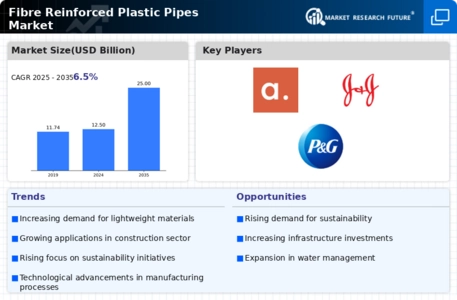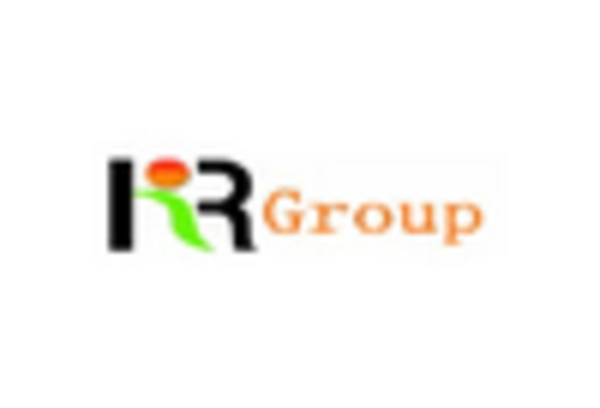Cost-Effectiveness
Cost-effectiveness is a vital driver influencing the Fibre Reinforced Plastic Pipes Market. The initial investment in fibre reinforced plastic pipes may be higher than traditional materials; however, their long-term benefits often outweigh these costs. These pipes require less maintenance and have a longer lifespan, which translates to lower operational costs over time. Additionally, the lightweight nature of these pipes reduces transportation and installation expenses, making them an economically viable option for many projects. As industries increasingly recognize the total cost of ownership, the demand for fibre reinforced plastic pipes is likely to rise, contributing to a projected market growth rate of approximately 6% in the coming years.
Regulatory Support
Regulatory support is emerging as a significant driver for the Fibre Reinforced Plastic Pipes Market. Governments worldwide are implementing stringent regulations aimed at enhancing infrastructure quality and sustainability. These regulations often favor the use of advanced materials like fibre reinforced plastics due to their longevity and reduced environmental impact. For instance, many regions are mandating the use of corrosion-resistant materials in water and sewage systems, which directly benefits the fibre reinforced plastic pipes market. This regulatory landscape is expected to bolster market growth, with projections indicating a potential increase in market size by 5% annually as industries adapt to comply with these evolving standards.
Diverse Applications
The versatility of fibre reinforced plastic pipes is a key driver for the Fibre Reinforced Plastic Pipes Market. These pipes find applications across a multitude of sectors, including water supply, sewage systems, chemical processing, and telecommunications. Their lightweight nature and resistance to chemicals make them suitable for both above-ground and underground installations. The market is particularly buoyed by the increasing demand for efficient water management systems, with investments in infrastructure projects rising significantly. Reports indicate that the water and wastewater management sector alone accounts for a substantial share of the market, projected to reach USD 2 billion by 2027. This diverse applicability ensures a steady demand for fibre reinforced plastic pipes, fostering market growth.
Sustainability Focus
The increasing emphasis on sustainability is a pivotal driver for the Fibre Reinforced Plastic Pipes Market. As industries and governments strive to reduce their carbon footprints, the demand for eco-friendly materials has surged. Fibre reinforced plastic pipes, known for their durability and resistance to corrosion, offer a sustainable alternative to traditional materials. This shift is reflected in the rising adoption rates, with the market projected to grow at a compound annual growth rate of approximately 6% over the next few years. The ability of these pipes to withstand harsh environmental conditions while minimizing waste aligns with global sustainability goals, making them an attractive choice for various applications, including water management and infrastructure development.
Technological Advancements
Technological advancements play a crucial role in propelling the Fibre Reinforced Plastic Pipes Market forward. Innovations in manufacturing processes, such as automated production techniques and enhanced material formulations, have significantly improved the performance characteristics of these pipes. For instance, the introduction of advanced composite materials has led to pipes that are lighter yet stronger, thereby expanding their applicability in sectors like oil and gas, construction, and agriculture. The market is witnessing a shift towards smart piping solutions, integrating sensors for real-time monitoring, which enhances operational efficiency. This trend is expected to contribute to a market growth rate of around 6% annually, as industries increasingly seek to leverage technology for improved infrastructure.


















Leave a Comment